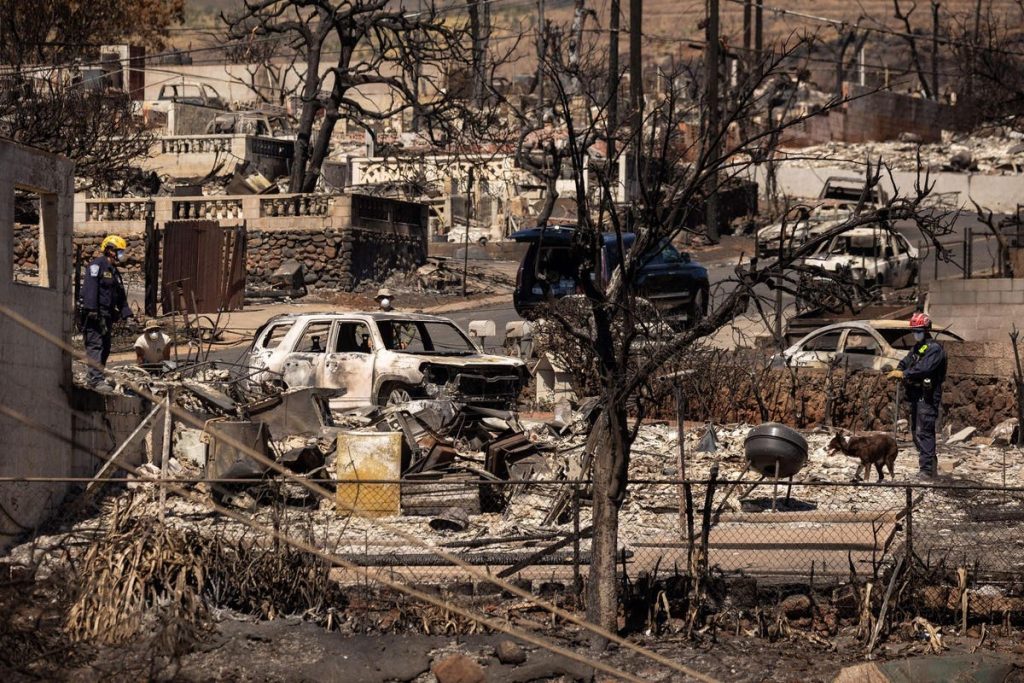It has been a month since a series of wildfires first broke out on the Hawaiian island of Maui. The wind-driven fires caused widespread damage, killing at least 115 people and leaving nearly 400 others missing. It could take years for the area around the town of Lahaina to recover, but in many ways, it is already becoming old news.
This is often the case following a disaster.
There is round-the-clock news coverage, calls for thoughts and prayers, visits by the president and other officials—and then the story ends, even if the recovery can be months and years in the making. However, thanks to platforms such as Facebook, Instagram and X, Maui may not be so quickly forgotten.
“The role social media plays really well in situations such as Maui is to pick up where traditional media leaves off,” explained Susan Campbell, distinguished lecturer in the Department of Communication, Film and Media Studies at the University of New Haven, and advisor to The Charger Bulletin.
The media has always “moved on” from one breaking news item to the next, but today, even the local news can’t stay on a disaster forever anymore. It is actually a reflection of smaller newsrooms as much as story fatigue.
“After Hurricane Katrina, the local newspaper, the Times-Picayune, did a masterful job of letting people know what was happening online, before Facebook, and people came to rely on the information they could find there—a relatively new concept back then,” added Campbell. “Even after the rest of the nation moved on, the Times-Picayune stayed on that story and the rest of us could follow online.”
Citizen Reporters Picking Up The Slack
Given the changing media landscape and how local news outlets have to do more with less, social media could fill that void to make sure that the recovery in Maui is still reported.
The same holds true for any community following a disaster.
“News staffs are significantly smaller, and people rely on online information—social media—posted by people who are on the ground; or so one would hope,” Campbell continued. “In a disaster such as the Maui fires, the larger media is already looking elsewhere, but locals are keeping the conversations going online.”
Social media can also help individuals who are still trying to find missing loved ones and to get answers to commonly asked questions.
“Due to the fast-changing nature of these disasters, social media is an ideal means to share information but it is imperative that the information is accurate when posted,” suggested Dr. Alan Fyall, associate dean and endowed chair of Tourism Marketing at the Rosen College of Hospitality Management at the University of Central Florida.
“Clear date and time should appear in the post with a regular sequence of timed updates ideal,” noted Fyall. “Strict control of such posts is critical, however, to ensure reliability and believability of the message(s) being communicated.”
However, social media may not be able to fully replace mainstream media outlets.
For one, citizen reporters are unlikely to cover a story as deeply as actual news organizations. The issue has further been complicated by the fact that Facebook and Instagram parent Meta began blocking news links to users in Canada in June after the country passed a law that allows news organizations to negotiate with tech giants to receive payments for articles shared on their platforms.
Not All Posts Are Helpful However
There can also be a downside to social media reports following a disaster, as the platforms can be employed to spread misinformation and worse.
“Sadly, conspiracy theories and false information are as prevalent in disaster news as they are in political news, and people must apply all their media literacy skills to vet their online sources. For people from afar who are still following this story, these posts can be a godsend,” said Campbell.
Another issue is what is being posted.
Not everyone may want to be forever online, recorded/photographed at what could be among the worst moments in their lives. Social media can also present photos and videos out of context, and the true narrative can be quickly lost. It is therefore crucial that users should ask before taking photos of someone in distress and ensure that the correct details are shared.
“People will automatically post their photos which are both good and bad,” said Fyall. “Where many posts will add to the confusion and anxiety caused by the disaster, other posts will be deemed to be helpful, direct people to more secure locations and highlight tourist-safe spots. The challenge is also the accuracy of date and time so those following have an accurate timeline of what is going on, when, and where. Source credibility is also an issue, whereby random posts from an unknown source will add ‘fuel to the fire’ rather than be viewed objectively as helpful.”
Read the full article here









